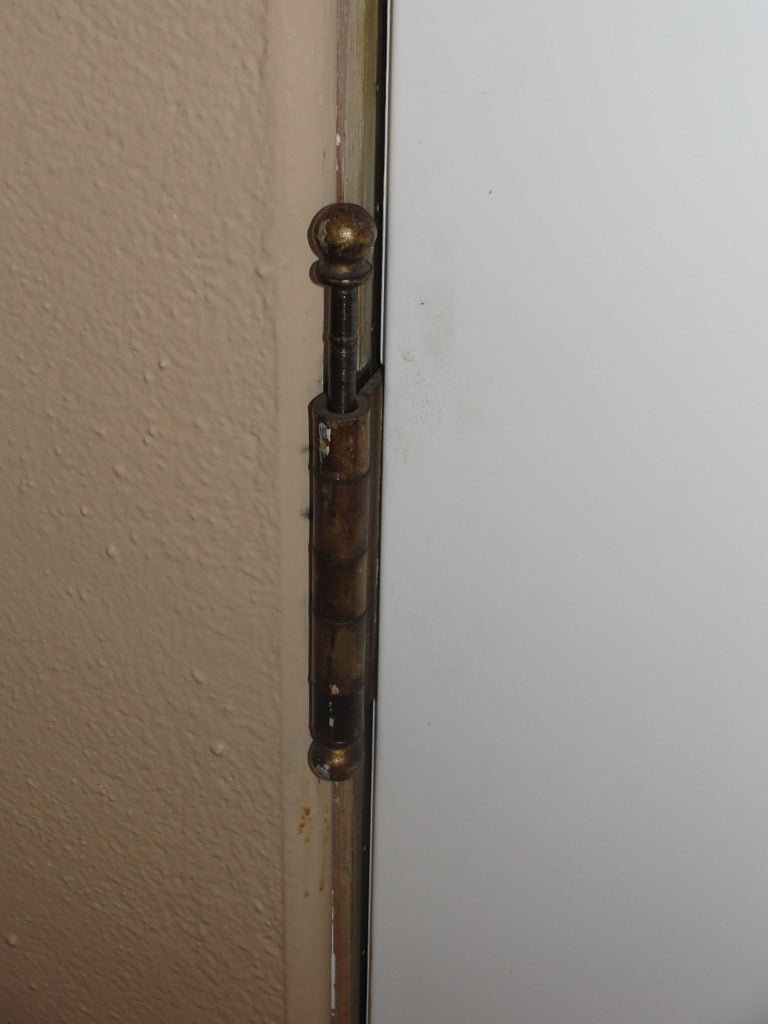
Maybe your door is sounding more like a rusty gate than the elegant entrance it was meant to be. In this article, we’ll tackle how to troubleshoot a squeaky door hinge. Whether you’re living in an older home where the doors have seen better days or dealing with a new installation that just needs some tender loving care, we’ve got you covered. Let’s dive into why door hinges squeak and how you can fix it without losing your mind.
Understanding Why Door Hinges Squeak
When you hear that annoying *squeak*, what’s happening? Essentially, a door hinge squeaks due to a lack of lubrication or dirt building up in the hinge mechanism. Think of it like a bike chain—when it’s rusty and dry, it doesn’t move smoothly. A hinge that’s not well-maintained will make noise as the metal parts rub against each other.
This rubbing can happen more as time goes on, especially in doors that are frequently used. If you think about it, your door hinges are like the unsung heroes of your home. They’re working hard every day, opening and closing, yet they often get overlooked. In short, your squeaking hinge is begging for a little attention to keep it moving nicely.
Identifying the Source of the Squeak
Before diving into solutions, it helps to pinpoint where the squeak is coming from. Is it the hinge itself, or could it be the door frame? Use a simple method: gently wiggle the door while listening closely.
If the noise seems to come from the hinge area, you’re likely dealing with a lack of lubrication. However, if the door makes noise when it touches the frame, there might be contact issues or misalignment at play. A trusty friend or family member can help here: they can turn the doorknob while you listen closely. This little teamwork can save you a lot of time later on.
Gathering Your Tools for Repair
You don’t need a toolbox full of expensive gadgets to get this job done. Here’s a simple list of what you’ll need for fixing that squeaky door hinge:
- Lubricant: Silicone spray or lithium grease works well.
- Paper towels: To wipe down the hinge and catch drips.
- Screwdriver: If you need to remove the hinge.
- Old cloth: For any clean-up.
- Optional: A small brush or toothbrush to clean debris.
These tools are pretty basic, but they’re all you’ll need for a quick fix. Now that you’ve gathered your materials, you’re ready to tackle that squeaky problem!
Step-by-Step Guide to Lubricating the Hinge
Now that you’re prepared, let’s go through the steps to lubricate that squeaky door hinge. Here’s how to do it:
1. Clean the Hinge: First, use an old cloth to wipe away any dirt or dust on and around the hinge. If there are stubborn bits, a toothbrush can help remove them.
2. Apply Lubricant: Spray a generous amount of lubricant directly onto the hinge. Make sure the spray gets into all the nooks and crannies.
3. Open and Close the Door: After applying the lubricant, open and close the door a few times. This action helps the lubricant spread evenly throughout the hinge.
4. Wipe Off Excess: Use a paper towel to catch any excess lubricant that drips off. This will keep your door and floor clean.
5. Check for Squeaks: Finally, listen closely as you open and close the door again. If the squeak is gone, congratulations, you’ve solved the problem!
It’s a pretty straightforward process, and you’ll be amazed at how much smoother your door operates with just this simple task.
When to Consider Replacing the Hinge
Sometimes, no amount of lubrication will fix a squeaky hinge. If you’ve tried everything and the squeak persists, it might be time to consider replacing the hinge. Here are a few signs that indicate a replacement is necessary:
– Visible Damage: If the hinge is rusted or cracked, it’s a clear sign it needs replacement.
– Loose Screws: If the hinge is wobbling and screws are loose, it may not hold the door properly anymore.
– Persistent Squeaking: If you’ve lubricated it multiple times and it still squeaks, the hinge may be beyond repair.
Replacing a hinge isn’t overly complicated, but it might involve more than just a quick fix. You’ll want to measure the size and type of your current hinge, then purchase a replacement that fits.
Preventing Future Squeaks
Once you’ve got the squeak under control, you’ll want to prevent it from coming back. Here are some tips to keep your hinges silent and smooth in the future:
– Regular Maintenance: Make a habit of checking and lubricating your door hinges every few months. Just a quick spray can save you from future squeaks.
– Watch for Moisture: Humidity can cause hinges to rust, so ensure your doors are in a dry area. If you live in a humid climate, consider using moisture-resistant hinges.
– Don’t Force the Door: Sometimes we force doors that stick, which can lead to unnecessary wear on the hinge. If the door sticks, check for misalignment and fix it rather than forcing it.
By staying proactive, you can keep your door hinges in great shape for years to come!
Final Thoughts on Troubleshooting Squeaky Door Hinges
Addressing a squeaky door hinge that only squeaks when closing is much simpler than it seems. With just a few basic tools and a little elbow grease, you can have your doors working smoothly again. Remember to listen to your hinges, clean them regularly, and apply lubricant as needed. If all else fails, don’t hesitate to consider replacing them.
Ultimately, a quiet door not only improves your home’s atmosphere but also adds to its overall charm. So, next time you hear that telltale *squeak*, you’ll know just what to do to fix it!
